Like many Hi-Fi optimization topics, record weights and clamps intended for record stabilization divide opinion. In the pro-stabilization camp, many feel that a record weight or clamp can bring stability during playback, while also helping to tighten and focus the overall sound. Over in the anti-stabilization camp, there is a feeling that record stabilizers can put unnecessary strain on turntable belts and bearings for what are very subtle performance upgrades.
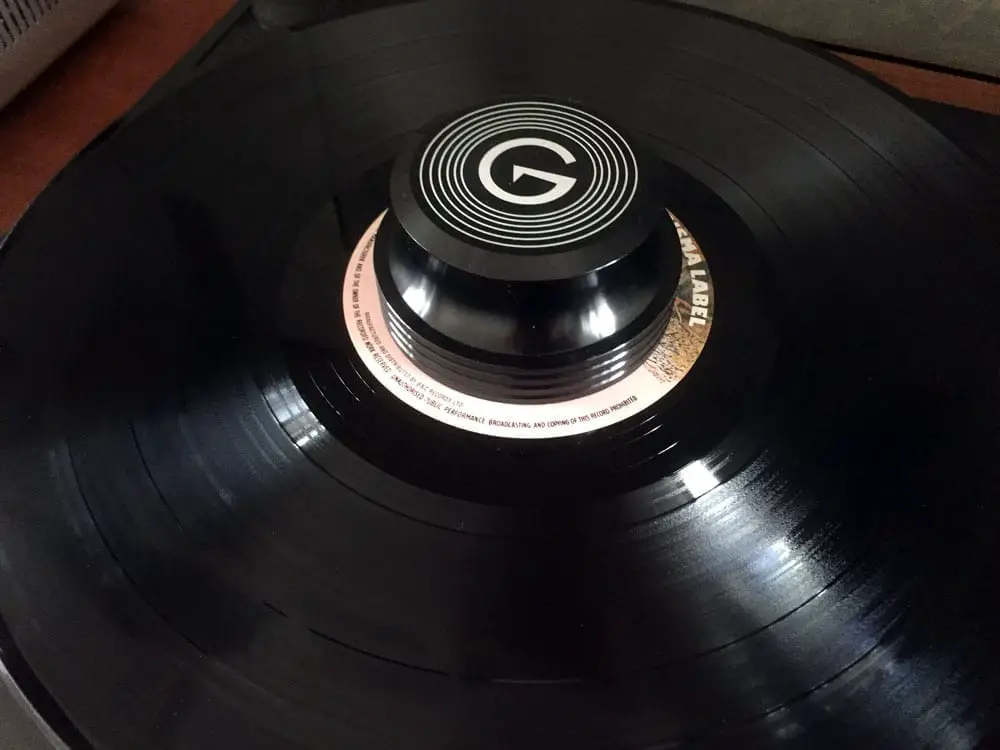
One thing we can all agree on, however, is that a stable, secure record will perform and sound better. Record clamps and weights are just one of the ways you can look to enhance the performance of your turntable in this area.
How do they work?
Quite simply, a record weight adds extra mass to the disc, while a clamp adds additional force. The idea is to improve contact between the disc and the platter to prevent slipping, improve tracking performance, and help control resonance. In the case of warped records, they can be absolutely necessary to make the disc playable.
Here’s the benefits in a little more detail:
Any vibrations that reach your stylus will result in an audible signal – the tick is to keep unwanted vibrations away, allowing the stylus to focus on the job at hand. Even the physical process of reading the grooves causes a small amount of vibration energy that can make its way back to the stylus, and ultimately, back into the audio system. Securing the record to the platter helps to minimize vibrations and makes the record easier to track. The result is a tighter, more focused sound across the frequency spectrum.
Slipping Prevention
As the platter spins, there is potential for a record to slip. Depending on your turntable platter mat–and how tightly the record fits on the spindle–this may or may not be an issue. However, if the record moves, you will certainly experience a change in pitch. By adding weight or clamping the record, you can significantly reduce the risk of this happening.
Closely related to this problem is wow and flutter. Some folks claim that adding a weight or clamp can help to reduce wow and flutter by improving speed stability as a result of the additional mass. While this claim is credible, any improvement is likely to be quite subtle.
Warped Records
As briefly touched on above, the ability to improve the playback performance of warped records is one of the key benefits to record stabilizers. Warped records are harder for the stylus to track, and so adding a little weight – or clamping the disc – can help flatten the disc and improve tracking. However, there are limits, and a weight or clamp will do little for severely warped discs.
Some Things to Consider
The potential weight and strain on the belt and bearings of a turntable should certainly not be ignored. It is advisable to avoid record weights on many cheaper record players or turntables. If you’re at all concerned, it’s best to check with the manufacturer first. If your turntable has a suspension system, you must check to see if the systems can support the weight. In some instances, you may have to re-tune the suspension to support the additional weight. Record weights vary in weight quite dramatically. My personal preference is to a fairly moderate weight that adds some downward pressure, without risking unnecessary force.
Should I buy a Clamp or a Weight?
Ask a few vinyl enthusiasts this question, and you’ll get a different answer from each person. In general, record clamps have the added advantage of securing the record without as much additional weight. This might sway your decision if you’re worried about the potential for strain on your turntable components. The downside to clamps is the additional time required to physically clamp the disc. For many, this is quite frankly a pain in the backside, and you could argue there is a risk of damage if you over-tighten, or your hand slips onto the vinyl in the process. Like anything in audio, there are pros and cons to each option.
Which Weight or Clamp Should I buy?
GrooveWasher Record Weight
A good starting point is this option from GrooveWasher. It weighs in at 0.91 pounds (417grams), adding modest pressure compared to some heavier models on the market. Simple and effective to use, this option will get you up and running for just under $50.
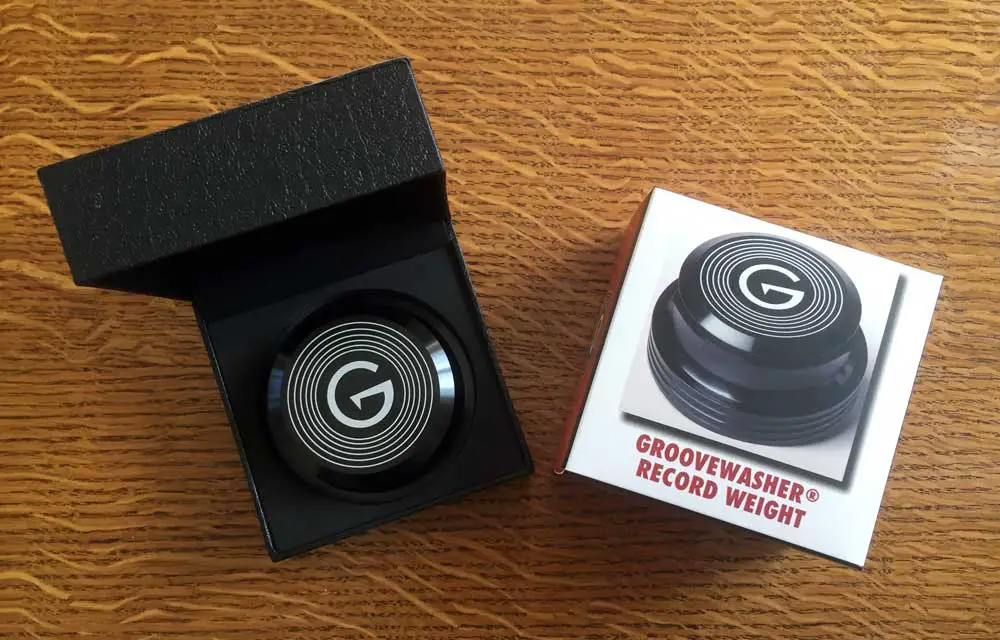
Soundeck DPS Damping Puck
This option takes the concept further by adding a layer of the vibration absorbing polymer to help collect and remove record vibrations. The Soundeck is a little heavier at 1.71 pounds (780grams), so you’ll need to be sure your turntable can endure the extra mass. It’s also worth noting that Soundeck also manufactures an aluminum version, which weighs in at 267grams and is said to be more suitable for suspension record decks.
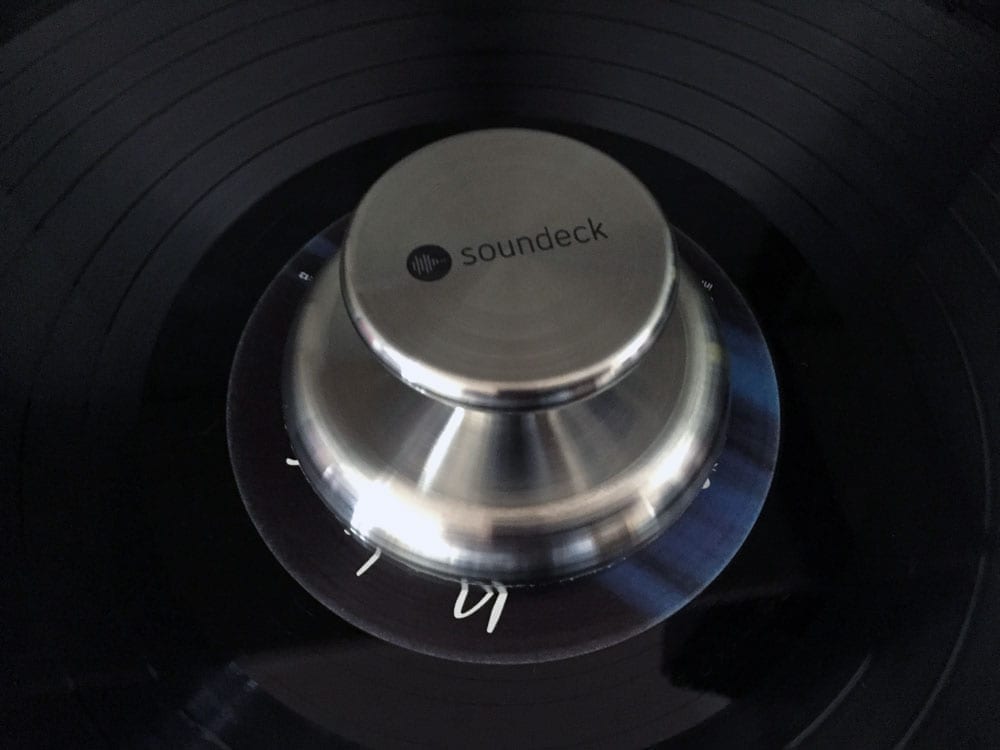
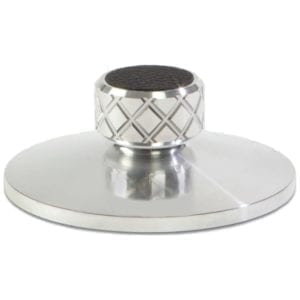 Project Clamp It Record Clamp
Project Clamp It Record Clamp
For those preferring to clamp their records, the ProJect Clamp It is a great place to start. Clamp It allows you to adjust the pressure depending on the severity of your warped records, and it’s well-built, with its finely machined diamond-cut edges. When choosing a clamp, it’s important to make sure the model you choose can fit on your turntable spindle. In some cases, you might need to purchase a specific model designed for the size and form of your deck.
The Bottom Line
Will a record weight transform your entire setup and allow you to reach audio nirvana? Of course not. There are many elements you can tweak to improve performance in a Hi-Fi system, but the truth is, you’ll get a bigger bang for your buck by upgrading the core components first. Record weights and clamps offer optimization, not transformation; consider this the icing on the cake, or perhaps the cherry on top of the turntable.

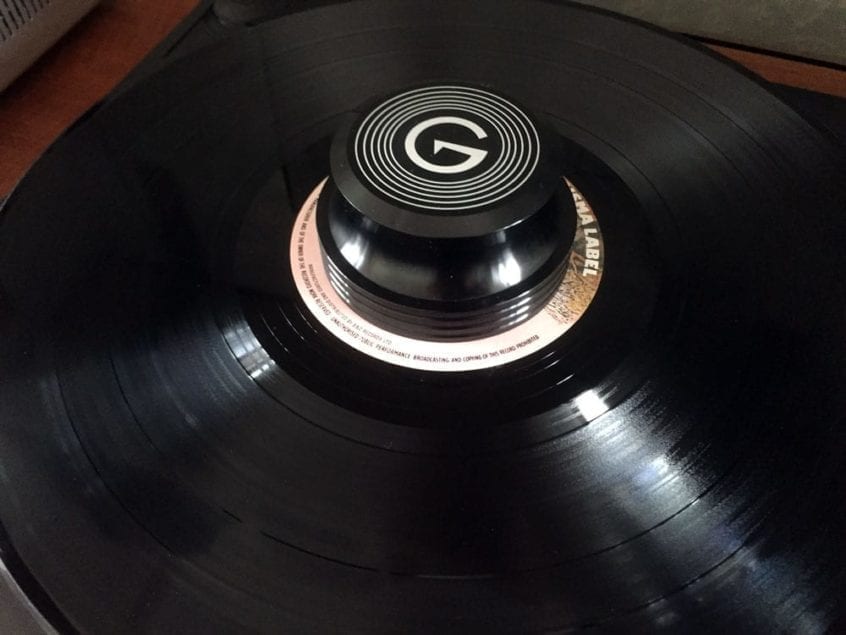


I have the Groove Washer weight and I use it. I have only tried one warped record and it made no difference. I have done a blinded test whereby the listeners did not know when the weight was on or off and none of us could tell the difference. We then used a frequency analyzer and the analyzer could not measure any difference. I continue to use my weight but am not convinced it makes any difference.
Snake Oil. My records do not slip, once placed on the platter, my albums spin at exactly the speed intended while gripped by the record mat beneath, that most certainly does not slip whatsoever. Clamps are cheap, highly marked up dreck.
Having used weights, clamps and vacuum systems to flatten and/or damp the LP I think you’ve missed one point in your otherwise fine analysis. Unless one buys only premium, thick LPs, it’s inevitable that you”ll have a warped and/or”cupped” disc. The most effective clamping systems use a small thin puck centered around the spindle. Clamping over this can flatten minor warps. However, it’s entirely possible to clamp too much over the puck and have the edge of the disc lift off the mat. (One gets a feeling for it with practice.) This method was first used by ORACLE many, many years ago. SOTA has used it for quite awhile with their REFLEX camp. I’ve used this and , in my opinion, is 2nd only to a vacuum system. I’m currently suing a vacuum SOTA COSMOS that I’ve had for 20+ years.
steve
If you’re looking for a clamp that’s simple, won’t add additional weight, is quick to install/remove and is reasonably priced the Clearaudio Clever Clamp is worth considering. It should work with any turntable without having to modify anything.
I tried a weight I came up with that weighted 3/4ths of a pound, that was a triangular shaped fishing weight, and I heard no difference whatsoever, not sure if it’s my turntable or not.
I saw a record weight/level online. It’s a bubble level, I guess that is a “spin” on the subject.. Personally, I think much of the effect on listening pleasure is one of “pomp & circumstance”. I admit I enjoy that song, as well as some worship of the “Glow” of a Mac, or the feel of a volume knob. The fine details of the subject are measurable, in one matrix or another. Actually, I will buy the bubble level record weight, but as they say in the fine print, “Caveat emptor” and let the spinning begin.
The real question is, what about speaker cable supports off the floor…
Namaste, Greg
Hi Mark. I added a clamp to my “artillery” a few months ago and, after listening comparatively to records in my collection, I recommend it decidedly! The improve in sound is clear and strong when you spin records under 180 grams (a vast majority in the golden 70’s decade). On the contrary, I would advise against “record weights” because they are too heavy and impose extra force to belts and, probably, direct drivers too.
i’d like to have your opinion for my technics sl1200 mk2.do you suggest me to bye a clamp or not?wlould this couse any problem to the mechanism?thanks in advance!
[…] out full feature on record weights, […]
Both items make a repro change and work in combo with the substrate mat material which should be considered together with the clamp /weight. Absorption of any vibe present in the vinyl, that’s not the music, needs control IMO.
Old BBC decks used thick felt to wick away plastic vibrations caused by the heavier VTF s then . I tried this with clamp abd felt it reduced the dynamic . After more listening I realised it removed distortions that I’d been enjoying as ‘ kosha ‘ ‘vinyl ‘ sound. . Felt has disadvantages tho .
Record weights/clamps seem like a good idea to me, but my TT manufacturer explicitly says in the user manual that a weight should not be used so I don’t use one.